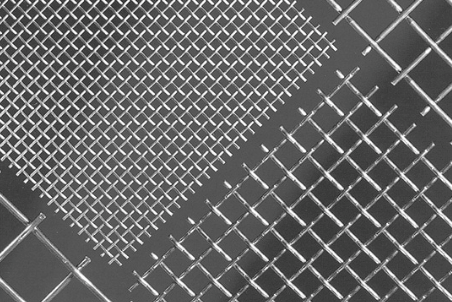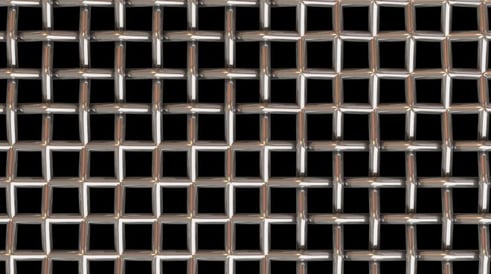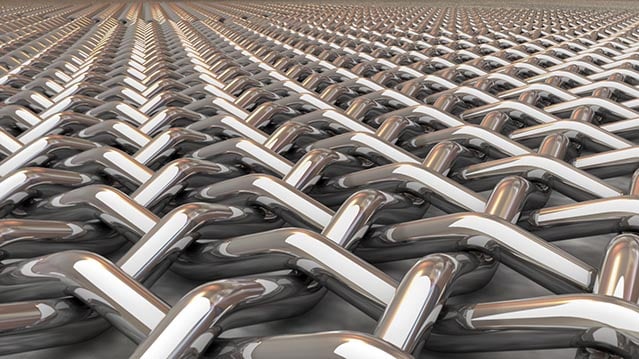Fabricating Heating Elements: Why Use Woven Wire Mesh?
Whether heating water for a nice shower after work or heating a room to create a warm, cozy atmosphere on a snowy night, heating devices are essential to everyday life. It is important that these devices work efficiently so end users can trust that they will see the optimal performance needed to achieve maximum comfort.
For this reason, manufacturers must experiment with various materials, such as woven wire mesh, to fabricate reliable heating elements that generate adequate heat. But how exactly will you benefit from using woven wire mesh as a heating element?
W.S. Tyler has been weaving wire mesh into customers' products for over 150 years, helping them build confidence in their product's performance.
With that in mind, we wrote the following article to help you understand the essential benefits wire mesh offers when used as heating elements. You will learn:
- The definition of a heating element
- How heating elements work
- The definition of woven wire mesh
- The benefits of using woven wire mesh heating elements
What Is a Heating Element?
A heating element is a component designed to convert various forms of electrical energy into heat. As electrical energy passes through the element, heat is projected from the entire surface area of the electrically charged components.
Now, it is important that the heating element distributes heat evenly. For this reason, materials like coil mesh and woven wire mesh are used to fabricate modern heating elements.
How Does a Heating Element Work?
To produce an adequate amount of heat, an electrical current must be projected through the heating element. As this current makes its way through the element, it is confronted with resistance.
This resistance causes a build-up of energy until the heating element becomes extremely hot with the iconic red glow. It's because of this that manufacturers can control the amount of heat their products produce by hand-picking what alloy they use to fabricate the heating element.
What Is Wire Mesh?
Woven wire mesh is a metallic mesh made up of hundreds of individual wires that are interwoven together. These wire undergo a heavily monitored weaving process to form weave patterns furnished with pore openings that are rigid and precise.

As parameters such as the wire diameter, mesh opening, mesh count, alloy, etc., can be customized, it is widely known for being one of the more versatile solutions of its kind. You can even heat treat, weld, form, calendar, and more after the mesh is woven to further enhance how it performs within your process.
Why Use a Wire Mesh Heating Element?
From coiled wires to complex cartridge units, there are a wide range of heating element solutions out there. This leaves you wondering why you should consider integrating woven wire mesh.
Well, it comes down to three main beneficial qualities that can enhance the performance of your heating devices. These qualities are a wide range of alloy selections, formability, and open profile.
Alloy Selection

As stated above, manufacturers can use the alloy of the heating element to control the amount of heat being produced. This is because all metal alloys fall under one of two categories: conductors and insulators.
Conductors are wire mesh alloys that promote the flow of electrical currents, thus, offering low flow resistance. Insulators are wire mesh alloys that hinder the flow of electrical currents, thus, offering high flow resistance.
Woven wire mesh can be woven using both types, meaning the material won't affect your ability to fine-tune the performance of your heating unit. That said, nickel-based alloys, such as TY-Chrome and Incoloy, are used when applying woven wire mesh as a heating element.
That said, there are a wide range of alloys that can be used to weave wire mesh.
Formability

One of the most prominent characteristics of woven wire mesh is its ability to deliver durable pliability. As a result, it can be formed into a specific shape without altering the integrity of the wires or pore openings.
Having a heating element that is formed in accordance with the device is critical to even heat distribution. In other words, the formability of wire mesh allows manufacturers to engineer heating devices that deliver uniform functionality each and every time.
Open Profile

One of the more unique qualities of woven wire mesh is that it is considered an open product. This means that the pore openings created by the wire intersections allow air to flow freely.
Now, when less open materials are used, the heat being produced can become stagnate, taking longer to heat a room. When using wire mesh, however, you can project air through the openings of the heated mesh, circulating heated air through the room quicker.
Get To Know Woven Wire Mesh Inside and Out
Heating elements are used to convert electrical energy into comforting heat. While several materials can be used to fabricate heating elements, the alloy selection, formability, and openness offered by woven wire mesh makes it a stand-out product.
But before you go out and start inquiring about potential woven wire mesh solutions, it is critical that you familiarize yourself with the verbiage and nomenclature that is used throughout the industry. This will ensure you are fully prepared to ask the right questions needed to design a cost-effective product that performs.
With over 150 years of woven wire mesh experience, W.S. Tyler is here to help you navigate the industry so you can remove the roadblocks that may hinder the way you use woven wire mesh.
To learn the fundamentals of woven wire mesh, read the following article:
About Ronnie Brown
Ronnie is the Content Writer for W.S. Tyler and has four years of experience as a professional writer. He strives to expand his knowledge on all things particle analysis and woven wire mesh to leverage his exceptional writing and graphic design skills, creating a one-of-a-kind experience for customers.




